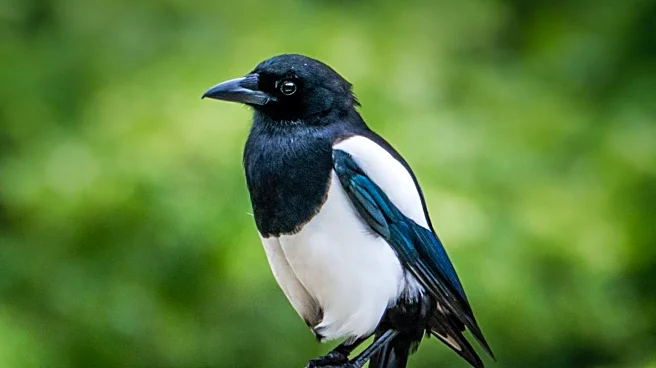What's Happening?
The cassowary, a large flightless bird native to Australia, has long puzzled scientists with its helmet-like structure known as a casque. Recent studies have revealed that the casque serves as a temperature regulation tool rather than a protective feature. Made of keratin, the casque helps the cassowary maintain its internal temperature in the tropical climate it inhabits. The study, published on Nature.com, involved observing 20 cassowaries and their casque's response to varying ambient temperatures. The findings indicate that the casque's blood vessels dilate or constrict to regulate heat, providing the bird with an adaptive internal HVAC system.
Why It's Important?
Understanding the function of the cassowary's casque is significant for several reasons. It provides insights into the evolutionary adaptations of birds to their environments, particularly in terms of thermoregulation. This knowledge can inform conservation efforts by highlighting the importance of habitat conditions for the survival of species like the cassowary. Additionally, the study contributes to the broader understanding of keratin's role in animal physiology, potentially influencing research in other species with similar structures.
What's Next?
Further studies are needed to explore the full capabilities of the cassowary's casque and its evolutionary connections to other species. Scientists aim to investigate the familial links between cassowaries and their ancient relatives, such as pterosaurs, to uncover more about their evolutionary history. The challenge remains in studying cassowaries due to their long lifespan and the difficulty in obtaining specimens for research. Continued research may reveal additional functions of the casque beyond temperature regulation.
Beyond the Headlines
The study of the cassowary's casque opens up discussions on the broader implications of animal adaptations in response to environmental pressures. It highlights the intricate relationship between physical traits and survival strategies, offering a window into the evolutionary processes that shape biodiversity. The research also underscores the importance of interdisciplinary approaches in studying complex biological phenomena, combining insights from zoology, ecology, and evolutionary biology.













